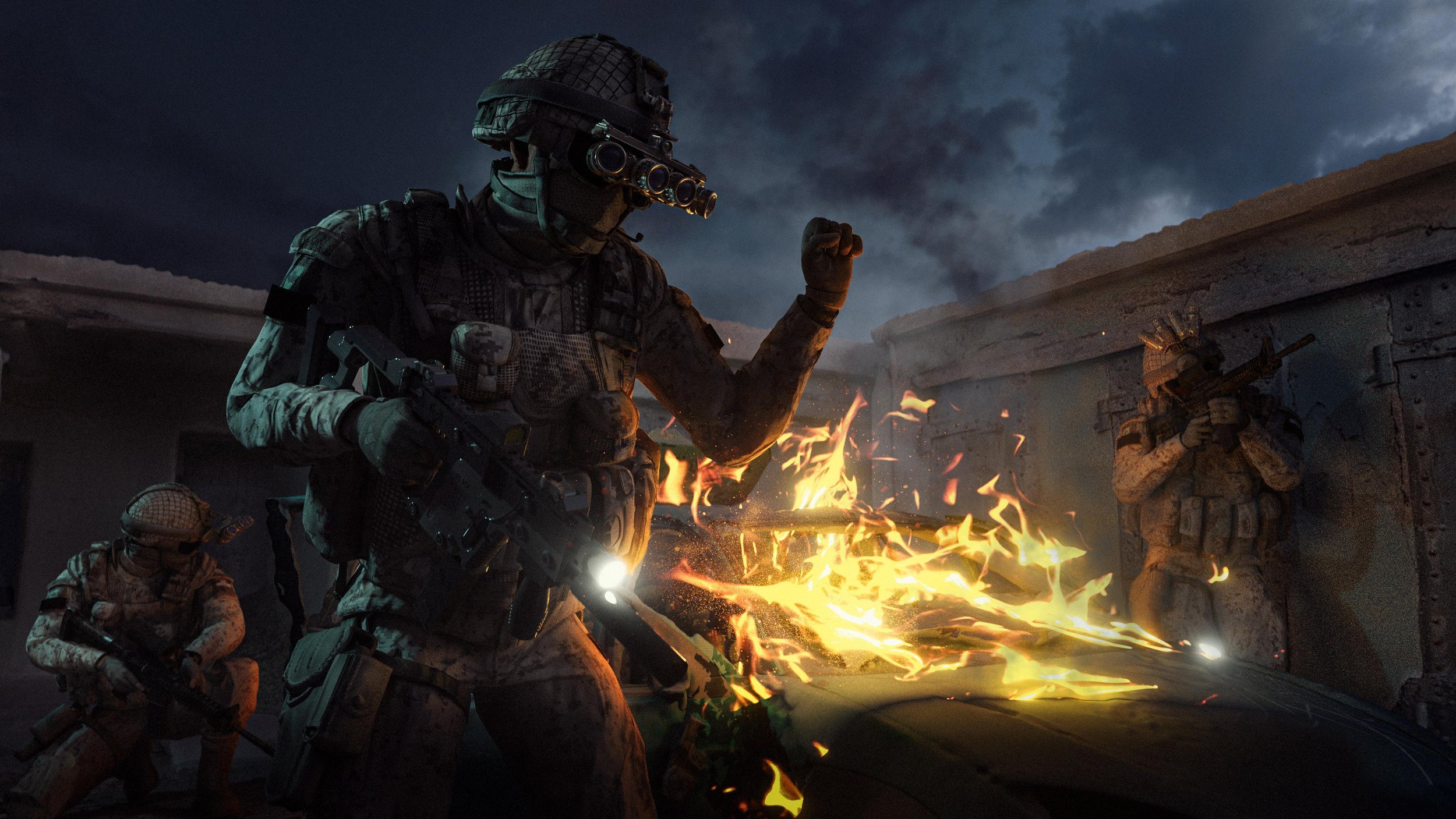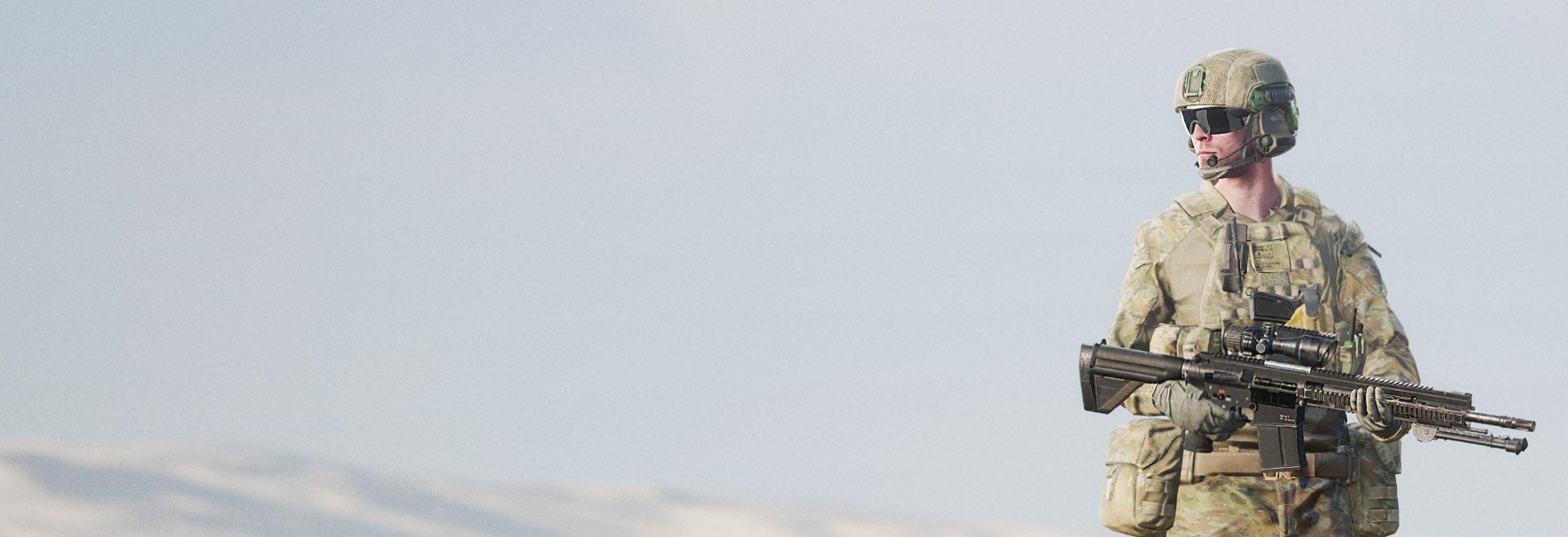
Squad is a tactical FPS that provides authentic combat experiences through teamwork, constant communication, and gameplay. It bridges the large gap between arcade shooter and military simulation with 100 player battles, combined arms combat, base building, and a great integrated VoIP system.

My work on SQUAD started as technical game design, but quickly evolved to something bigger, as I started supporting art and level design with technical art.
Here are the results of some of that work.
Character shading: skin and eyes
These were some of the most interesting shaders I created for SQUAD. The skin material is based on real world 3D-scanned data, which allowed for the generation of texture channels, such as roughness maps, normal maps, and a custom sub-surface map on Substance Painter.
The eye material was designed to be flexible. Character artists were able to adjust not only the iris color but also its size, pupil size and sclera brightness.
Both skin and eye materials render subsurface scattering so intense light can penetrate the material and spread, resulting in a more realistic look and feel.
Weapon Emplacement
I worked closely with programmers and the design team, iterating through a system that allows players to deploy, build and utilize emplaced weapons.
I implemented many of the emplaced weapons available on SQUAD, as well as the gameplay balancing, aiming, projectile trajectory, and resource management for those weapons.
Abrams M1A2
I worked on the rigging and implementation of various vehicles on Squad.
The highlight of this work was the American battle tank Abrams M1A2 you see on your left. This is a fan favorite as the backbone of the US Army and Marine Corps.
I included multiple small details and movable parts in this vehicle, such as antennas that bounce when in motion, and chains that use the rigid body system from animation blueprints on Unreal Engine.
I also designed and implemented weapon digital interfaces. You will often find gunners inside looking at an in-game screens with compasses, night vision, and infra-red filters. A combination of widget blueprints and post processing materials proved useful in achieving the desired effects.
Helicopter flight model cool factor
Working with the programmers, I prototyped the flight model for the choppers on Squad.
We wanted it to look and feel as real as possible. In the real world, helicopters are faster than this game could support, so, naturally, there were challenges to overcome.
The flight model I developed was a mix between a realistic simulation and an arcade flight model. Players could now feel like they were piloting a real helicopter without the need to learn all the controls from a simulator—also without the risk of flying into an invisible wall.
This here is a heads-up-display inspired by a real aircraft.
I consulted with real life pilots to ensure the information I was representing was accurate and relevant, while still keeping everything easy to read.
The results speak for themselves. Today, anyone can hop on SQUAD, become a chopper pilot, and fly for their team.
All elements on the HUD are dynamic and represent information the aircraft is reading from its environment, such as airspeed, bearing, altitude and rotation information.







